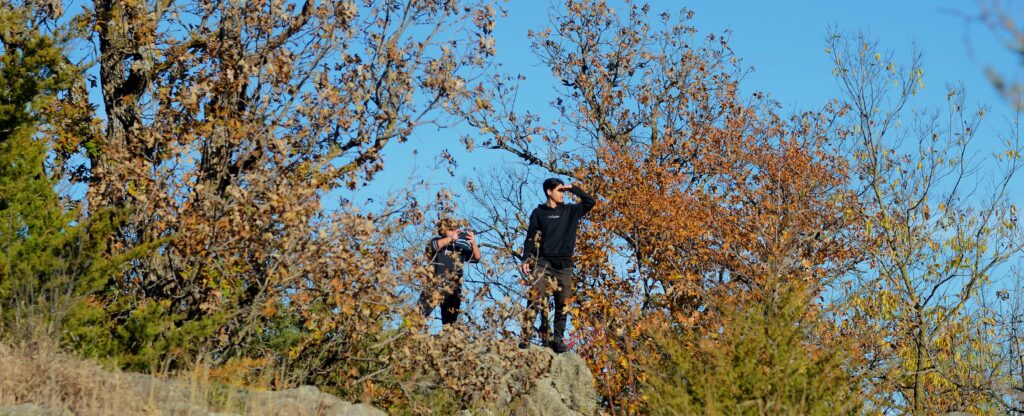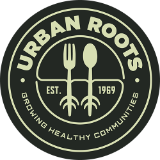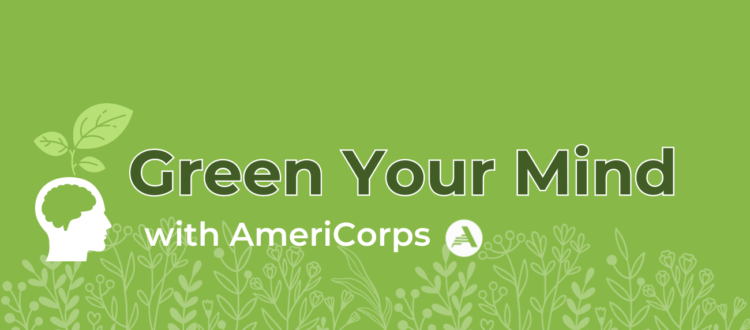Growing an Urban Forest
Why helping to grow the urban tree canopy is beneficial to you, your neighbor, and the environment

Written by Megan Myers, AmeriCorps Intern serving at Urban Roots
Urban Forests
When most people think of a forest, they probably imagine a picturesque wooded recreational area or a rugged, bear-inhabited countryside- not city blocks lined with bustling traffic and 10-story high rises. However, both imaginings of a forest would be correct- and urban forests around the world are on the rise. According to the U.S. Department of Agriculture’s Forest Service, over 141 million acres of forests in the U.S. can be found in cities and towns.1 The trees found in parks, planted in neat rows on boulevards, the lone maple in your front yard- those are all a part of your city’s forest! Urban trees help to clean pollutants out of the air that we breathe and the water we drink. They add incredible beauty, have a positive impact on mental health, store water, absorb city noise, provide habitat space for wildlife, save energy, add economic value to communities, and so much more! As the nation becomes more urbanized in the coming decades (according to a 2010 census report, nearly 81% of Americans live in an urban area)2, the creation and stewardship of urban green spaces has become more important than ever before!
So how can we ensure that our urban forests remain happy and healthy for future generations?
Talking Trees
Well, a great start to improving the health and quality of our urban forests is by planting more trees! Trees are like people- they benefit from being a part of a community. Forest ecologist Dr. Suzanne Simard uncovered the secret “Wood Wide Web,” an amalgamation of bacteria and hair-like filaments known as mycorrhizal fungi that connect the root systems of trees to one another. This underground neural pathway allows trees to “talk” to one another and share resources in times of need. It is also this network that allows saplings in traditional forests to thrive even though they are often shaded from their spot on the forest floor by larger, older trees. These large trees are often referred to as hub trees, or “Mother Trees.” Because oftentimes not enough sunlight reaches the leaves of young trees to conduct adequate photosynthesis, they rely on the mycorrhizal network that connects them to Mother Trees, allowing them to receive the sugars and nutrients they need to survive. In a city setting, it is fairly likely that not all young trees planted will obtain the adequate sunlight and resources they need to grow to be strong and resilient, however, by having a community of trees that can connect and share resources, the health of the urban forest will be much better. The Mother Tree Project is a great resource for learning more about the kin-like relationships of trees and how they communicate to withstand hardships.
Picking the Right Tree for Your Community
So we know that trees rely on a network of other trees to increase their resilience to threats like drought and climate change, but some trees are better suited to survive in some areas than others- how can we make sure that we choose a tree to plant that will thrive in our community? Well, first and foremost, it is important to know what trees are native and invasive to the ecosystem that you live in. The University of Minnesota, Minnesota DNR, and other credible research institutions regularly monitor and identify species that are both native and invasive to Minnesota. It’s also important to keep changing global climates in mind as we work to grow our urban tree canopies and find trees that will be more resilient to these changes in your local ecosystem. The Minnesota DNR also has a list of climate adapted trees that do well in urban settings.
As you do your research, take a look around your neighborhood and see what species of trees you see. Research shows that trees “talk” to one another only if they have the same bacteria and fungi that make up their mycorrhizal networks.3 If a Birch tree and a Fir tree develop and grow in close proximity to one another, they will likely share the same mycorrhizal network, allowing them to share interspecies “knowledge” and increase their forest’s adaptability and resilience. Scientists have also noticed that trees seem to recognize trees of the same species based on their microbial “footprint” and will preferentially share nutrients with them over other species through their mycorrhizal network (this behavior is referred to as “kin recognition”).4 When growing an urban forest, it is important to both encourage species biodiversity in close spaces while also allowing trees access to “kin” in that same area.
If you have questions about what trees will do best in your backyard, or what trees will help to best build up your neighborhood’s tree canopy fitness, reach out to your city’s foresters!
I’ve Got My Tree…Now What?
Once you figure out what tree will do best in your neighborhood forest, it can be both exciting and a little nerve wracking to care for it until it gets established. Luckily, there are tons of resources! The University of Minnesota has many tree and shrub planting and transplanting resources for plants at all stages and seasons. Before planting, also consider where in your yard a tree would make the most sense and be the most helpful for you. The placement of a tree can influence a lot of things on your property. For example, the Minnesota DNR recommends planting a tree so that it shades the east and west windows of your property as it will help cool your home and reduce air conditioning use. If you would like to let natural light into your home, be sure to avoid shading windows facing south. For more information on recommended tree placement, check out the DNR’s webpage.
A Growing Canopy
Our urban sprawl is continuing to grow, but that doesn’t mean that our wildlife spaces have to disappear in the process. By establishing new growth and revitalizing existing urban tree canopies, we can help ensure that everyone- plants, trees, animals, and people- will have access to clean air, clean water, and irreplaceable natural beauty for generations to come.
- https://www.fs.usda.gov/managing-land/urban-forests ↩︎
- Ibid ↩︎
- https://sitn.hms.harvard.edu/flash/2019/exploring-the-underground-network-of-trees-the-nervous-system-of-the-forest/ ↩︎
- Ibid ↩︎

